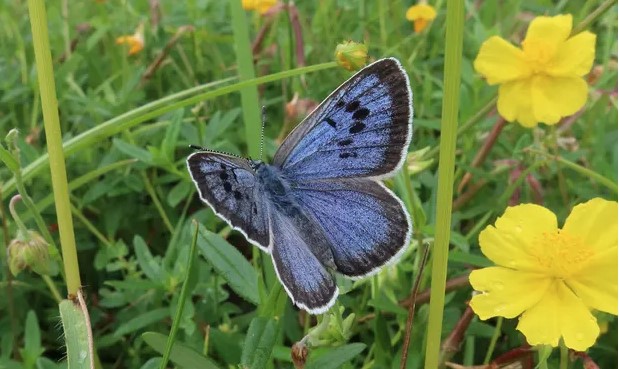Emeritus Fellow leads large blue butterfly to best summer in 150 years
The large blue butterfly, once instinct in Britain, has enjoyed its best summer in 150 years - thanks in no small part to Emeritus Fellow Jeremy Thomas.
The butterfly's lifestyle and requirements were studied and documented by Jeremy back in the 1970s, and he has played a key role in the large blue's successful reintroduction.
The caterpillars of the large blue rely on being adopted by a particular ant species - Myrmica sabuleti - who mistake them for their own grubs and take them down into the nest. The caterpillars are able to live there safely and feed on the real grubs, eventually emerging as butterflies. The ant species had been suffering due to changes in grazing practices and droughts, which had a knock-on effect on the large blue butterfly, eventually leading to their extinction in the UK.
Due to the restoration efforts, the South West of England now boasts the greatest concentration of large blue butterflies anywhere in the world.
The new meadows are managed or owned by six partner organisations – the National Trust, Somerset and Gloucestershire wildlife trusts, J & F Clark Trust, Natural England, and the University of Oxford.
'The unprecedented success of this project is testimony to what large-scale collaboration between conservationists, scientists and volunteers can achieve. Its greatest legacy is that it demonstrates that we can reverse the decline of globally threatened species once we understand the driving factors.'
- Jeremy Thomas, Emeritus Fellow

Photograph: David Simcox/Royal Entomological Society
Read more about the reintroduction of the large blue butterfly.
